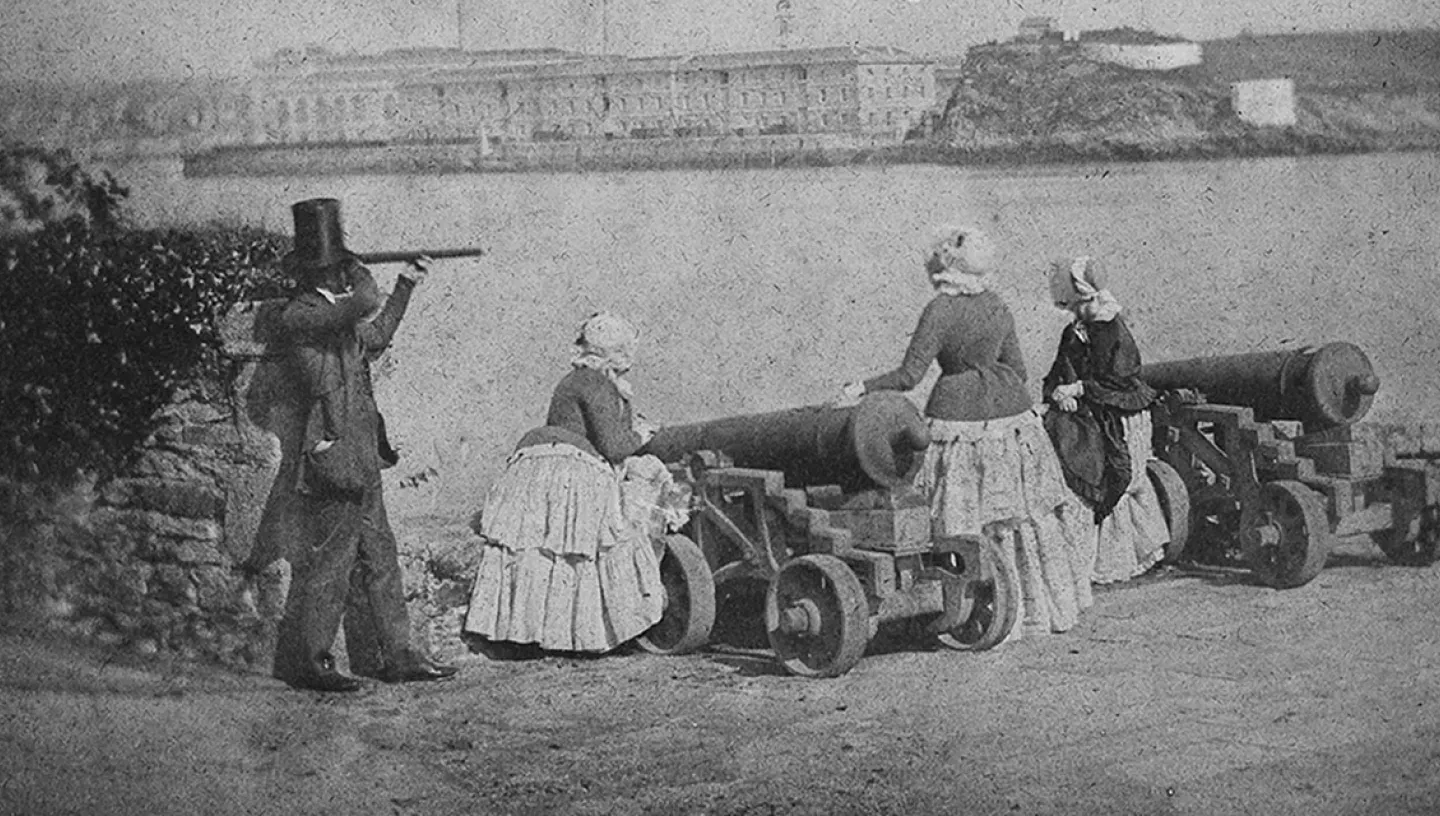
Names like WH Fox Talbot, Calvert R. Jones and Nicolaas Henneman are not well known within a maritime photographic context. These names are more familiar for their early pioneering photographic work using nature and architecture.
Yet the Museum holds a small but historically significant collection of original calotype negatives and salted paper prints from all three people.
In 1934, before the National Maritime Museum opened to the public, Miss Matilda Talbot MBE of Lacock Abbey donated 34 paper negatives and 27 salted paper prints of maritime subjects to the Museum. A few of these are highlighted below to illustrate the breadth of the collection.
The ‘Fox Talbot Collection’ (WHF Talbot did not use the ‘Fox’, but he is better known with it, so it is retained in the collection title) contains the earliest known and datable photograph of a merchant ship in our collection.
This is a negative, with a contemporary print, of Isambard Kingdom Brunel’s passenger liner Great Britain fitting out at Bristol in April or May 1844 before its maiden voyage.
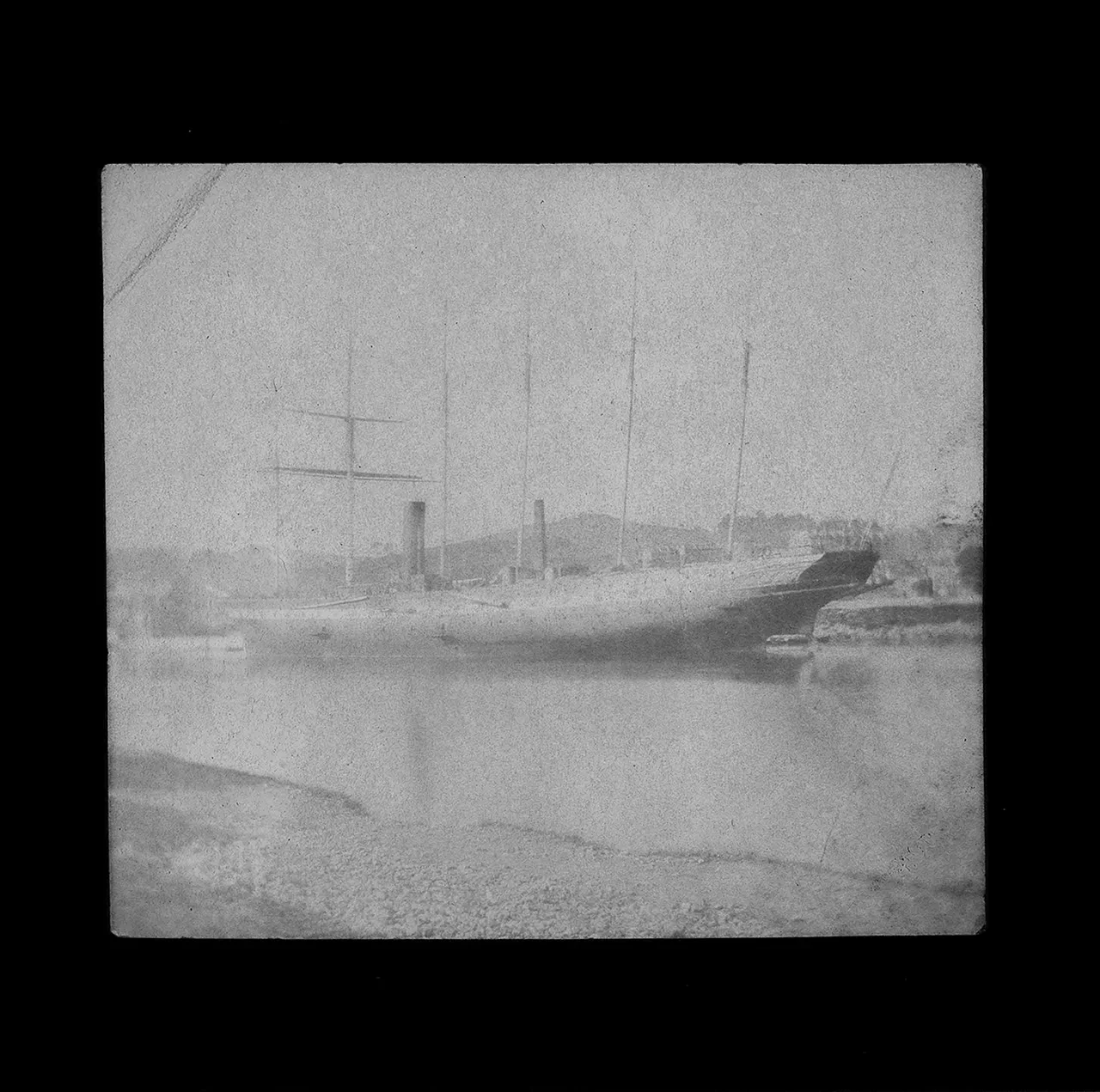
The collection has a couple of photographs of Greenwich Hospital while it still accommodated naval veterans.
One is a composed image of three veterans, two seated and one standing. Careful observations shows that there is a lady sitting between the two veterans, not another retired sailor as some have previously assumed.
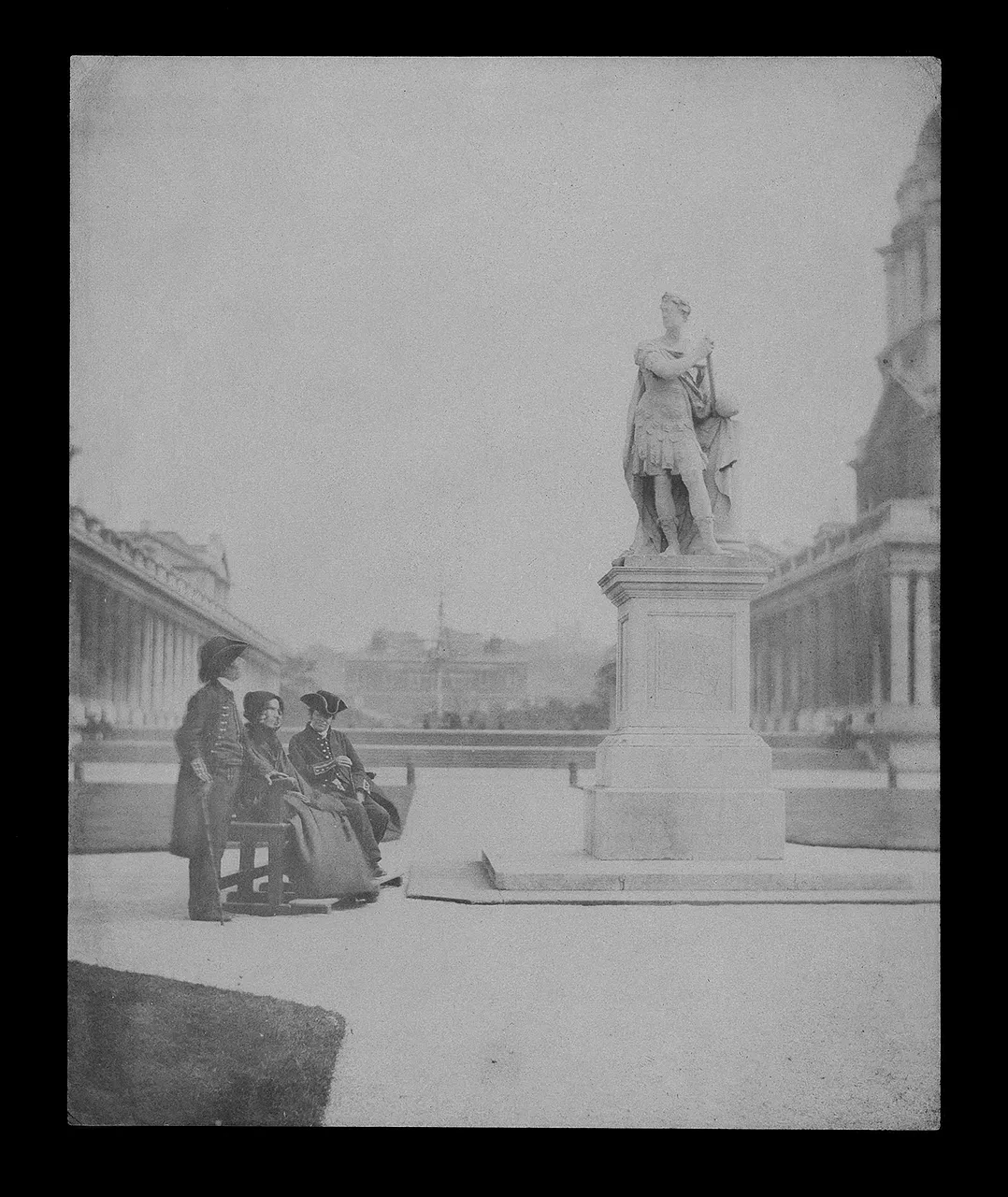
The largest series is from Reverend Calvert Richard Jones, dated between late 1845 to May 1846. He accompanied WHF Talbot’s cousin on a tour to Malta and then returned home via Italy.
During this trip, Jones sent his negatives back to Henneman to get them printed. The accompanying lists that survive with letters in the British Library were very useful for dating the negatives and prints.
The collection holds some of the earliest negatives and prints of Grand Harbour, Malta, and Naples and Messina.
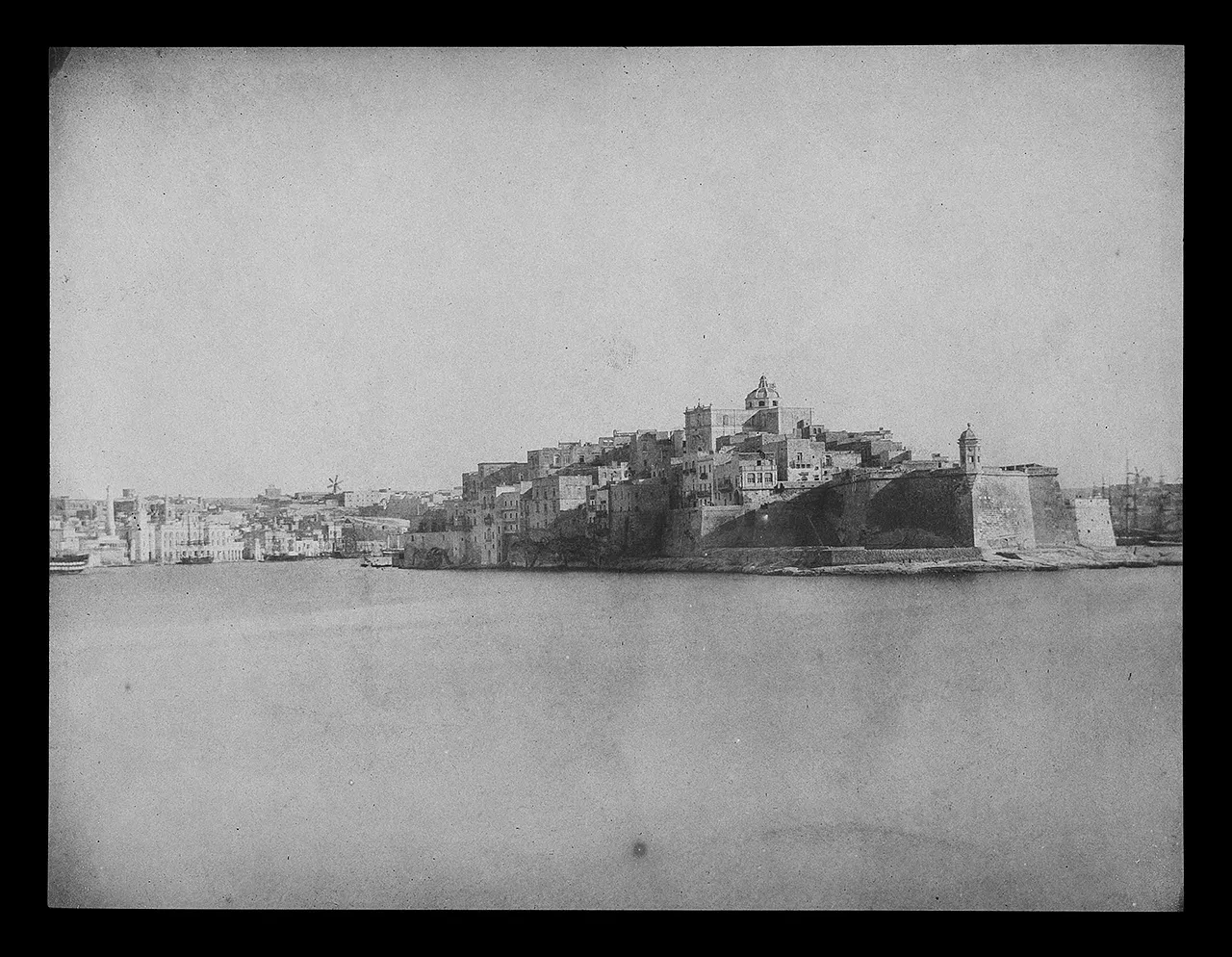
Closer to home, Talbot visited his half-sister, Lady Mount Edgecumbe at her family home at Mount Edgecumbe opposite Devonport naval base, Plymouth.
From here, he took, probably with the assistance of Henneman who worked closely with Talbot, two photographs of the recently completed Victualling Office.
On 26 September 1845 he and Henneman visited HMS Superb, taking a number of detailed photographs of the newly fitted warship before its departure with the Experimental Squadron.
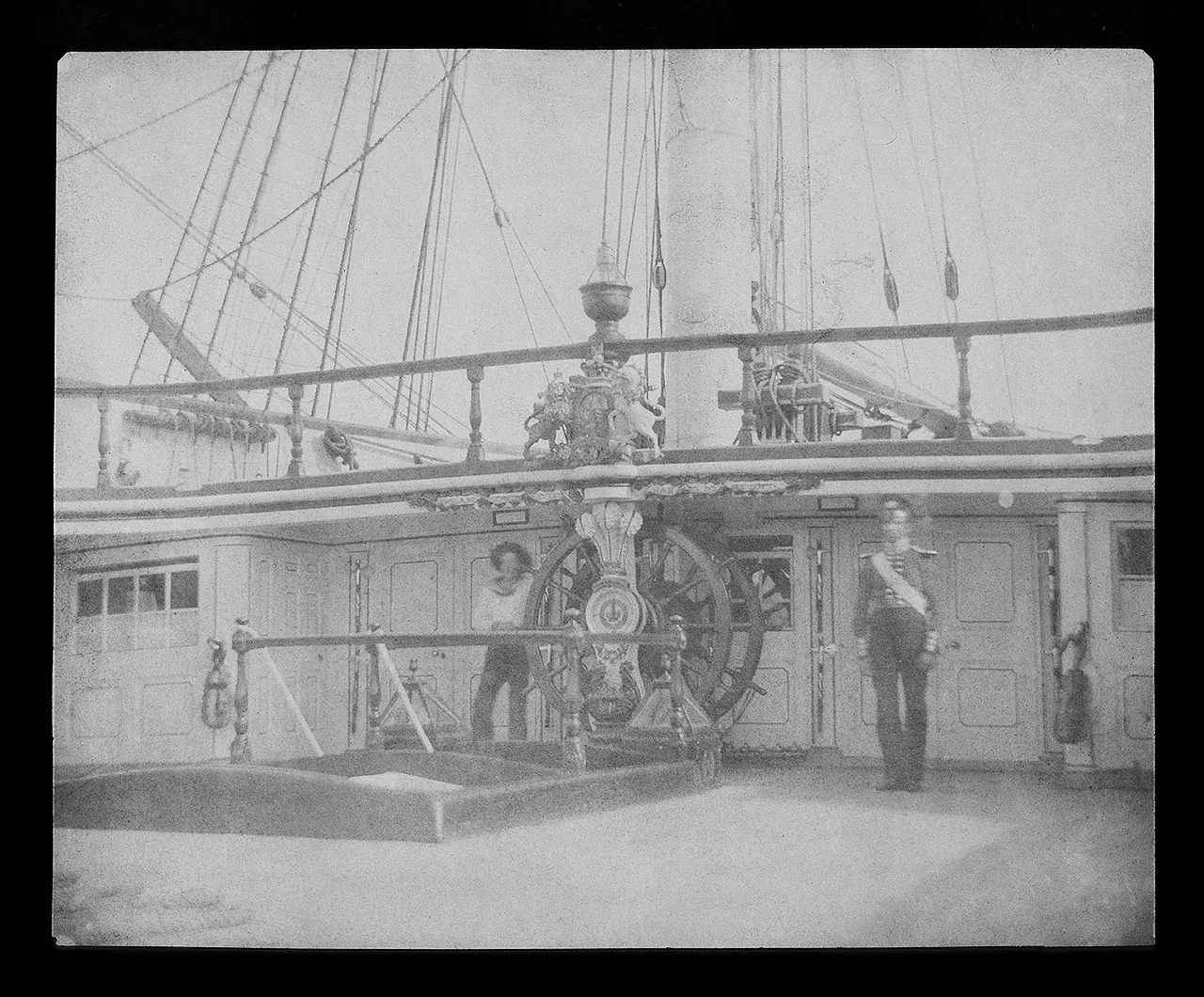
More broadly, the collection includes a series of negatives by Jones of shipping at Swansea, pushing the limits of the process’s ability to cope with moving objects.
The collection contains a few of the river Liffey in Dublin, with the Customs House as the backdrop to the shipping moored alongside. Talbot also took photographs of the river at Rouen and the suspension bridge seen from his hotel window.
This cataloguing could not have happened without the investigation, collation and hard work over many years by Professor Larry Schaaf.
His online database and the transcription of so much of Talbot’s correspondence helped me to understand the dynamics and context of the collection the Museum holds, as well as date, identify and better describe both negatives and prints.